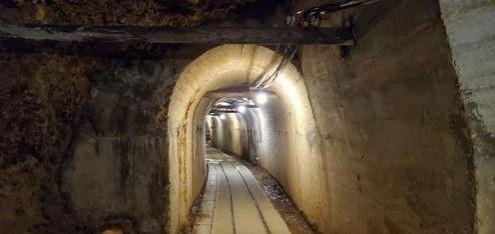
The Sado mine, once the largest producer of gold in the 17th century in Japan, is currently at the center of an international dispute. The controversy revolves around its proposed listing as a UNESCO World Heritage site. The mine's dark history as a site of forced labor during World War II is the bone of contention. South Korea insists that Japan must acknowledge this fact before the site is listed.
South Korea's foreign ministry has stated that its decision to assent to Japan's listing of the Sado mine complex as a UNESCO World Heritage site hinges on how Japan addresses the location's history as a site linked to its wartime forced labor. This stance was announced after the Japanese government released details of the evaluation by a UNESCO advisory body on its submission of the Sado gold and silver mines for the World Heritage inscription.
The International Council on Monuments and Sites (ICOMOS) recommended that the case be referred back to Japan to complement the application. This referral suggests that more information is needed, particularly regarding the site's historical context involving forced labor during World War II.

Japan has been pushing to inscribe the Sado mines on the World Heritage list, but South Korea has protested that Japan intends to leave out the part of its history as a site where thousands of Koreans were forced to toil during World War II, when Korea was under Japan's 1910-45 colonial rule.
The Sado mine's historical significance as the largest gold and silver mine in the 17th century is undeniable. However, its association with the use of forced labor during World War II has cast a shadow over its nomination as a UNESCO World Heritage site. The debate revolves around the need for Japan to acknowledge this dark chapter in its history before the site is listed.
The specific stance of the Japanese government regarding the incorporation of the forced labor history in the Sado mine's World Heritage nomination is not directly provided. However, the recommendation by ICOMOS that Japan complement its application suggests there might be a need for Japan to address the historical context of forced labor.

This controversy over the Sado mine's World Heritage nomination is not an isolated incident. It is part of a broader historical context of forced labor during wartime, which has been a contentious issue in many parts of the world. For instance, during World War II, many companies in Germany collaborated with the Nazi regime, using forced labor in their operations. In the post-war period, many of these companies issued apologies for their actions. Similarly, in the United States, the health insurer Aetna, Inc. apologized for selling insurance policies in the 1850s which reimbursed slave owners when their slaves died.
The controversy over the Sado mine's World Heritage nomination underscores the importance of acknowledging and addressing historical injustices, particularly those related to forced labor during wartime. It also highlights the role of international bodies like UNESCO in facilitating dialogue and promoting understanding about such complex historical issues. As the debate over the Sado mine's nomination continues, it serves as a reminder of the need for a balanced and nuanced approach to preserving and commemorating historical sites, one that respects both their cultural significance and their historical context.
















